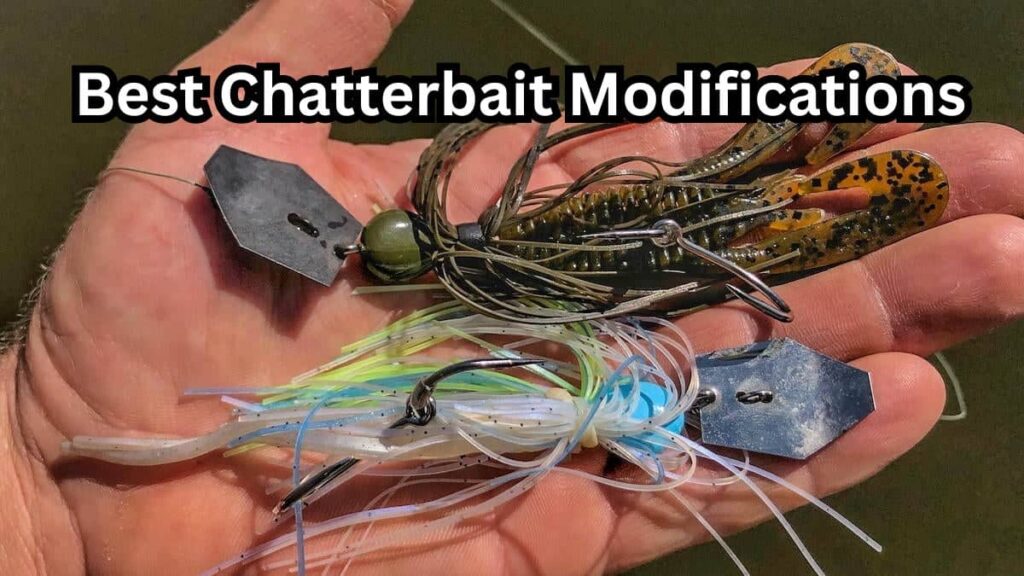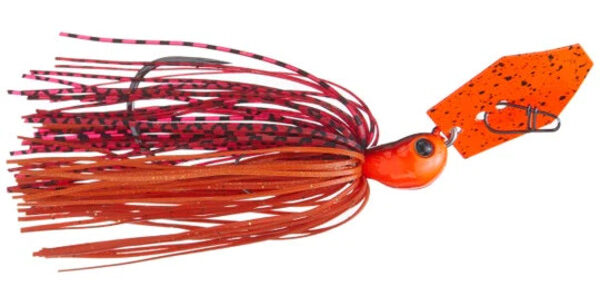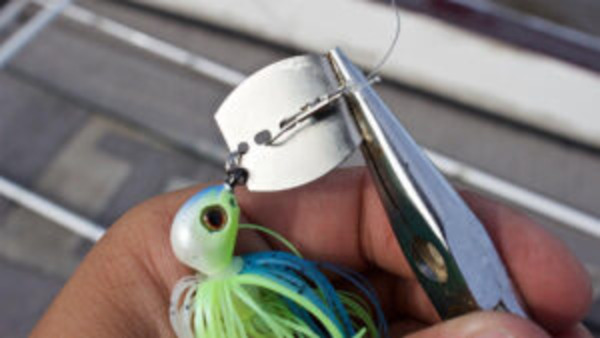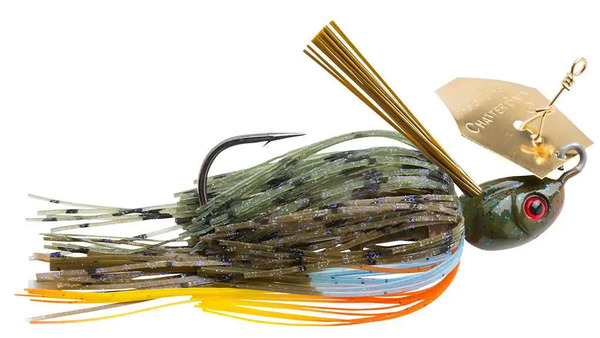5 Best Chatterbait Modifications to Catch More Bass

The art of fishing isn’t just about throwing your line into the water and hoping for the best.
It’s about understanding the nuances of your gear and making modifications that can tip the scales in your favor.
When it comes to chatterbaits, a few tweaks and adjustments can turn an average fishing day into a memorable one.
In this guide, we’ll explore some of the best chatterbait modifications that can help you catch more bass and improve your overall fishing experience.
Get Our Favorite Chatterbait Here!
Best Chatterbait Modifications
I regularly use all of these modifications and they have given me lots of success. Plus, part of the fun of bass fishing is experimenting and testing out new things.
1. Swap Skirt for Tube Bait

I have been playing around with this setup lately and I have been getting some great results.
The Tube bait gives the chatterbait a bigger profile, more scent, and most importantly, something different.
Chatterbaits have become own of the most popular bass lures, so bass have either seen them or been caught by them tons of times now.
Swapping the skirt for a tube bait maintains the look of the appendages but gives in a slightly different way.
It also allows you to swap the color of your chatterbait super quick and easy by just switching out the tube.
To rig it up, tare off a small piece of plastic worm from an old bait.
Push that piece up into the belly of the tube so that the hook has some plastic to hang onto.
Then just thread the tube on like any other chatterbait trailer.
2. Painting the Blade

These days, I pretty much always paint the blade on my chatterbaits. You can just do it very quickly with a sharpie or some spray paint.
The painted blades make the chatterbait a bit more natural and attractive close up.
No baitfish or crawfish has a flash face in front of it’s body.
I can 100% say that I catch more bass on chatterbaits with painted blades.
When it comes to color, I usually just paint them whatever color the body of the chatterbait is.
If I am using a red chatterbait, I’ll paint the blade red, and so on and so forth.
This is a super quick modification that will instantly get you more bites.
3. Bending the Blade

A lot of guys don’t know this, but you can actually change how fast the chatterbait wobbles and how much vibration it gives off by bending the blade.
If you bend the blade up, towards the hook a little bit, this will give the lure more thumb and vibration.
This is great for either muddy water or very warm water. If you bend the blade down and straighten it out, the lure will have a bit less thump and vibration.
This is ideal for either clear water or clear water scenarios.
4. Making the Chatterbait Weedless

This is probably the most aggressive modification that you can make to a chatterbait.
You are going to completely remove the body and jighead of the chatterbait.
Then, with a split ring, replace it with a swim jig. The swim jig will have the thick weed guard that allows you to fish just about anywhere.
Of course, you are going to miss a couple more bass, but you can also get a lot more bites because now you can fish the chatterbait through brush and grass.
This works really well during the post-spawn phase when bass are holding up close to vegetation and wood.
5. Trailer Hook

Anglers love to put a trailer hook on spinnerbaits and buzzbaits, but they don’t usually put one on a chatterbait.
To be honest, I don’t either, but there are a couple situations where I will throw on a trailer hook.
First, if I am fishing very dark, muddy water. In this muddy water, bass have a much harder time seeing the lure, to they often miss the bait a little bit and don’t get hooked.
Adding a trailer hook will put more of these bass into the boat.
Second, there are times when bass just seem to be slapping or nipping at the chatterbait.
Most likely this is because your chatterbait isn’t quite the right color.
But if you don’t have tons of different colors or tons of time to test them all out, adding a trailer hook can allow you to catch some of these bass.
Ultimately, a trailer hook will increases your hook up ratio, but it makes the chatterbait less weedless and doesn’t look quite as good.
Should You Trim the Skirt on a Chatterbait?
I would say yes. I almost always trim up my skirts a little bit. This shows off more of the trailer bait.
It also increases hook ups because the more compact profile is easier for bass to target and get the hook in their mouth.
Only trim the skirt about 1/4 to 1/2 of an inch. You don’t want the back of the hook to be sticking out behind the skirt.
Also Read: When to Use a Chatterbait?
FAQ
How Does a Chatterbait Work?
When retrieved through the water, the blade on the chatterbait creates a vibrating motion and flashes, mimicking the movement of a baitfish. This action attracts predatory fish like bass, pike, and walleye.
What are the Best Conditions for Chatterbait Fishing?
Chatterbaits work well in shallow water, around cover such as weeds, rocks, and fallen trees.
They are particularly effective during the spring and fall when fish are active and feeding closer to the shoreline.
What are Some Tips for Fishing a Chatterbait?
- Vary your retrieve speed to find what the fish are responding to.
- Use different colors and sizes of chatterbaits to match the local baitfish.
- Experiment with trailers like soft plastic swimbaits or crawfish to enhance the lure’s action and profile.
Reeling this In
The best anglers are those who are willing to experiment, innovate, and modify their gear to suit different conditions and challenges.
By incorporating the chatterbait modifications discussed in this article—such as swapping the skirt for a tube bait, painting the blade, bending the blade, making the chatterbait weedless, and considering a trailer hook—you can elevate your fishing game and increase your chances of landing that prized catch.
Remember, fishing is not just a sport—it’s a journey of discovery and continuous improvement.






